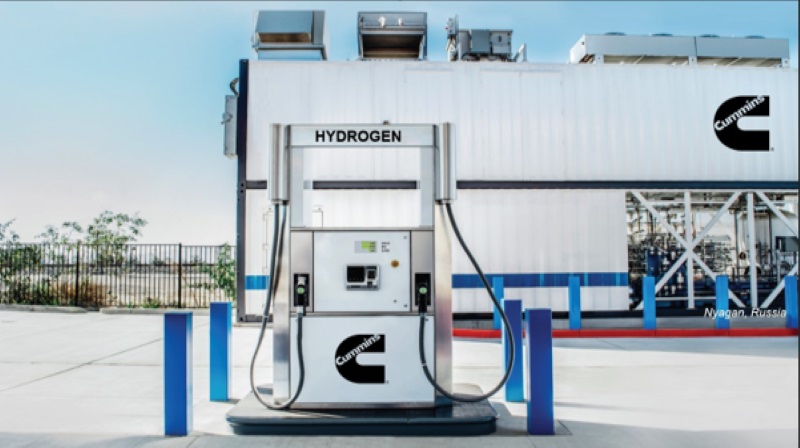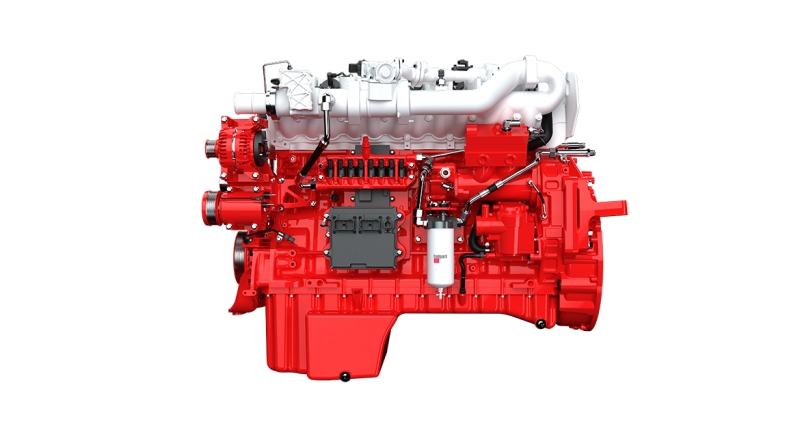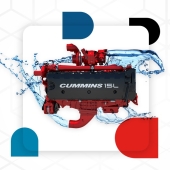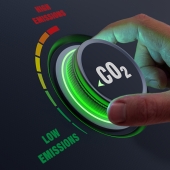Hydrogen Engines
Have questions about hydrogen engines? Start here for simple answers and dive deeper for additional hydrogen engine insights.
Growing interest in hydrogen engines
Hydrogen and hydrogen engines have been receiving a lot of attention in business circles, in the media, and in government. With good reason—the need to reduce global greenhouse gas emissions and reach destination zero is greater than ever. And hydrogen fuel is one of the most promising carriers of non-fossil energy.
In the electricity sector, power-to-hydrogen and hydrogen-to power-technologies such as hydrogen combustion turbines are rapidly developing. In the transportation sector, initial attention was focused on fuel cell hydrogen electric vehicles, or FCEVs. More recently, hydrogen vehicles powered by internal combustion engines are also receiving increased attention, especially among medium and heavy-duty trucking applications.
Hydrogen engines can enable your journey to destination zero using carbon-free hydrogen fuel as FCEVs, and use technology familiar to vehicle manufacturers, fleets and drivers.
Environmental benefits of hydrogen engines
Vehicles with hydrogen internal combustion engines can operate without any CO2 emissions coming from the hydrogen fuel, direct or indirect, depending on the source of the hydrogen used.
Hydrogen produced by electrolysis using electricity coming from solar panels or wind turbines, for example, enables CO2-free driving. Additionally, hydrogen fuels do not release any particulate matter, carbon monoxide, or volatile organic compounds.
Hydrogen engines do, however, have the potential to release some NOx, an atmospheric pollutant that can contribute to the haze sometimes observed above large cities during summer months. Aftertreatment systems are used to eliminate most NOx emissions.
In the United States, converting medium and heavy-duty trucks to clean hydrogen would eliminate about a quarter of all greenhouse gas emissions from the transportation sector.
Hydrogen engines’ role in destination zero emissions
Hydrogen, obtained through renewable sources, is one of the zero-emissions fuels to power vehicles.
Hydrogen engines offer a unique benefit to vehicle manufacturers and fleets among different low to zero carbon technologies. Hydrogen engines are built upon today’s modern and reliable internal combustion engines. For vehicle manufacturers, it is a familiar technology to use in their vehicle design and production. Similarly, for fleets, it is a familiar technology to operate, maintain, troubleshoot, and service.
Transitioning into hydrogen internal combustion engines
Hydrogen engines are reliable, have familiar technology, and deliver environmental benefits. These make the transition into hydrogen engines operationally and economically viable.
Meanwhile, two areas often come to mind as potential challenges in transitioning into hydrogen engines.
The first is on-board storage. Hydrogen vehicles require economical ways to store hydrogen onboard. Cummins Inc. has recently formed a joint venture with NPROXX, a leader in hydrogen storage and transportation for hydrogen storage tanks. This joint venture will provide hydrogen and compressed natural gas storage products for on-highway and rail applications.
The second is fueling infrastructure. Hydrogen cars and trucks can only be driven to the extent hydrogen is available. This is where trucking becomes a great initial use-case for hydrogen engines – more about this in the next section.
Applications to see hydrogen engines first
What type of vehicle should we expect to see adopt hydrogen engines in large numbers?
Contrary to what has been believed for decades, it is not likely to be personal cars—battery electric technology seems to be the better choice for that application.
Medium and heavy-duty applications are much more likely to turn to hydrogen fuel cells or hydrogen engines. It is likely in the coming decade, buses and long-haul trucks running on hydrogen are going to become a common sight. These come complementary to battery-electric buses and trucks that also are economically and operationally viable on certain mission profiles and applications.
Off-road, construction equipment, agricultural machinery, and even ships featuring a hydrogen engine are also likely to become common. These are most likely going to be the applications that are hard to electrify due to their use-cases and mission profiles.
Power generation applications are another use-case for the near-term application of hydrogen engines to produce electricity.
Hydrogen economy to be kickstarted by hydrogen engines
The hydrogen economy is a society-wide solution to global warming and to the exhaustion of fossil fuel.
In the hydrogen economy, fossil fuels are replaced by hydrogen produced from renewable sources.
One of the main challenges preventing progress in this direction is of circular nature. Mainstream hydrogen use can start once hydrogen fuel is widely available; and, hydrogen fuel will be widely available once there is mainstream use for it.
Good news; there are applications where use of hydrogen engines is viable in the absence of an extensive network of hydrogen fueling stations.
Long-haul trucking powered by hydrogen engines, for example, is possible with only a few hydrogen stations placed along the main shipping routes. It is possible to see hydrogen engine applications initiating a virtuous cycle leading to a greater availability of hydrogen and thus to more hydrogen applications.
Hydrogen engines and fuel cells
Hydrogen engines and hydrogen fuel cells are very different technologies that achieve a similar function—powering a vehicle using hydrogen.
They are two complementary technologies that serve different applications and respond to different end user requirements.
Fuel cells are a new and advanced technology.
Hydrogen engines are just modified internal combustion engines. The hydrogen fueling infrastructure developed for the applications of one can serve the applications of the other. And, any development towards more economical onboard hydrogen storage is entirely applicable to both.















